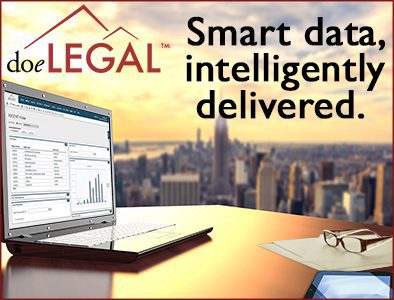As a business leader with close ties to the legal industry, I’ve been thinking a lot about data recently. Trends such as legal analytics, artificial intelligence, and machine learning continue to capture our imaginations and hold promise for changing how the law is practiced. The data implications are vast and as a result, discussions of big data abound in the technology world. But will these trends deliver meaningful insights if what results is simply more or bigger data? What we need is smart data or better data.
So, what is “smart data’ and what goes into making my data “smart”? A couple of weeks ago in a company meeting, we posed that question to each of our teams. The Development team felt that “data in and of itself is not smart. The way it is reported, shared, and used makes it smart.” The Client Support team said, “It’s not the data that is smart, it is the process and user experience around the data that makes it smart.” Our Data Center IT gurus asserted, “What makes data smart is its secure and responsive availability.” And, finally, our sales staff contributed, “Smart data is the ability of the data to be whatever the client wants it to be, today and into the future.” These seemingly diverse definitions are actually quite interrelated as each represents a different aspect of what our clients tell us is critical to them relative to data. So perhaps the best definition of “smart data” combines all of these perspectives:
Smart data is:
 secure and available at any time, from anywhere.
secure and available at any time, from anywhere.- unrestricted and immediately actionable with an ability to report on and analyze every data element in real-time.
- configurable to evolve with any new workflow or other business requirements.
- relevant over time to inform business decisions now and in the future.
How the idea of smart data evolved
The idea of data has certainly evolved over the years. When I was in college, I remember looking at my tray of punch cards lying on the floor in a pile and thinking these computers weren’t very smart after all. Then as I started my career, data was primarily the output of a records management function. We could key in records and then print them out in a specific order on huge green bar computer paper. We have certainly come a long way in how we interact with data and have become smarter about what we should expect from it. With the promise of Artificial Intelligence and its implications for data, I suspect smart data will get a whole lot smarter in the next few years. We will stay on top of it.
How this helps design ASCENT®
It was with this perspective that we deliberately seek ways to make data “smarter” when we expand and add to our ASCENT® Enterprise Legal Management software. It is important to our clients that matter and spend management data be available in real-time, highly configurable, and never, ever require a “fork-lift” expensive conversion or upgrade. So, we built it that way. It is also important that the pricing model be as inclusive as possible so that legal teams never have to worry about finding resources to deal with new reports, new templates, or new users. So ASCENT® works that way. And to provide expert support to stand behind what we promise is also critical to our clients. So the entire company works with that as our mission as well.
Smart data enhances ASCENT®

But we take ASCENT® to another level of “smartness” in version 8.0 to help legal teams elevate their decision-making and drive successful outcomes. As a lawyer or legal operations professional, smart data must answer your questions, inform you, and give you confidence in its results. Smart data needs to put you in control of cases and costs by answering questions such as “what is going on in my legal department today” and help you forecast what might happen in the near future. And the way we implement smart data, it does just that, putting you in control so you can increase productivity and remove obstacles. By clicking a few buttons, you can see how many of your open matters haven’t had a deposition in six months and how that compares to this time last year. Smart data lets you drill down to see further details of your high-level summary so, for example, you see all open invoices older than 30 days. When you can simply click into the detailed data to understand what is contributing to the dollars being reported, your confidence in the data increases. The data begins to support, direct, and inform your decisions. That is “smart data” and that control is what you deserve from your enterprise legal management system.
How smart data helps add control
And for many, that intelligent control is exactly what they are seeking from their data. However, I believe there is one more business-critical element that smart data will provide. It gives you a single reference point from which to securely share information across your entire legal team, in-house staff, business unit reps, and outside counsel. Smart data provides the answers you need, when you need them, from a single source. When we securely open up access and enable real-time, informed control to the whole team, smart data feeds collaboration across your entire legal ecosystem and eliminates information silos. Working from one informed set of smart data, legal teams work together at a higher level, which makes me wonder if perhaps we will begin to develop a new term, “smart collaboration.” If the meeting where we asked our teams to define smart data is yet another indication, the answer is clearly yes.
 -Tom Russo
-Tom Russo
(former) President & CEO
doeLEGAL, Inc.



 secure and available at any time, from anywhere.
secure and available at any time, from anywhere.


